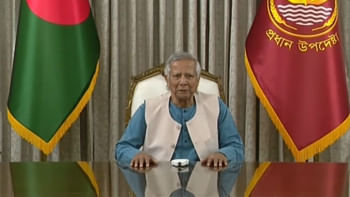The Mystifying Muslin

As the title suggests, Saiful Islam's book 'Muslin: Our Story' is a detailed study of a traditional craft. However, it is considerably more than that, as he uses the subject to elicit a much broader cultural history of Bengal. Highlighting the production and use of muslin, along with changes in materials and styles, he explores the muslin trade, relationships between the weavers and their landscape, and the transformations brought by European arrival and expansion. This is a groundbreaking and innovative study, where the author himself engages in complex weaving, entwining the threads of archival research, rare images and illustrations (there are over 130 of these) oral history, and the study of material culture to create an illuminating picture of muslin, its traders and what it meant for the lives of the weavers – their beliefs, livelihoods, and impact on the wider society and beyond.
The organization of the book uses, with considerable economy (the text occupies just over 240 pages), a compelling strategy for coherently presenting such a complex issue by privileging a style of communication that uses more narrative than analysis. And this proves to be extremely successful. Apart from the fact that it is well-written, the narrative style combines both storytelling and exposition in a way that is entertaining, emotional, highly impressionistic and at the same time informative, lucid and precise. This increases the engagement of the reader and makes the topic relevant for a much wider public.
Over the course of centuries, muslin weavers developed different strands of muslin traditions, each based on certain variations of the cotton plant. The author explores how the addition of each new material occurred in the context of lived experience, ecological processes, social conditions, economic circumstances, and historical eras. We learn that there were many different types of cotton used for muslin, with different names and uses; how main differences between types of muslin were classified and their links to specific locations – in a highly detailed manner. We are given a vivid picture of how this complex art passed down from generation to generation is a thread that bonds modern Bangladeshis to their ancestors, heritage and traditional ways of life. Woven with the stories of those who produce and use them, this art-form remains a powerful testament to the muslin weavers' creativity and imagination.
The book is divided into five chapters, tracing the rise of the cotton industry and its subsequent demise during the Colonial Period. As we see, the evolution of muslin (in each chapter, but especially cumulatively) has to be understood with reference to attendant implications of the current resurgence, which casts into relief the profoundly complex nature of some venerable, foundational assumptions about the definition of muslin. The author is particularly successful at describing how muslin weavers adapted to changes in their environment, finding new materials to continue a very old art form. He also provides a highly valuable account of the modern revitalization of muslin production within the context of an expanding urban economy. In a sense, by deconstructing and demystifying the historical legacy of this craft, we are able to rethink how the evolution of muslin has contributed to the invention of modernity and tradition.
Indeed, as the study reveals, the stories of muslin and the people who weave them are intertwined and inseparable. Incorporating written, woven, and spoken records, Islam demonstrates that changes in the production of muslin signalled important transformations in Bengal's culture and economy. The insights from written sources, interviews with contemporary muslin weavers, and a close examination of the different fabrics themselves, present muslin weavers as shapers and subjects of change – which is an interesting aspect of the book. Even in the face of cultural assault and environmental loss, muslin weavers have continued to adapt to changes – literally and metaphorically weaving new worlds from old.
The book is at its heart a historical narrative that takes into account the power of culture, identity, and the imperial colonial experience in shaping the story of muslin. It fully succeeds in delivering what it set out to do. After reading this book, one will surely have greater insights into what made muslin so unique and special, the artisans who made them, and the times in which they worked. Arguably the most impressive introduction to the subject-matter currently available, this fascinating story is invaluable to anyone with an interest in development work, ethno- history, social anthropology, visual arts or material culture.
The reviewer is an occasional contributor to this page.


 For all latest news, follow The Daily Star's Google News channel.
For all latest news, follow The Daily Star's Google News channel. 



Comments